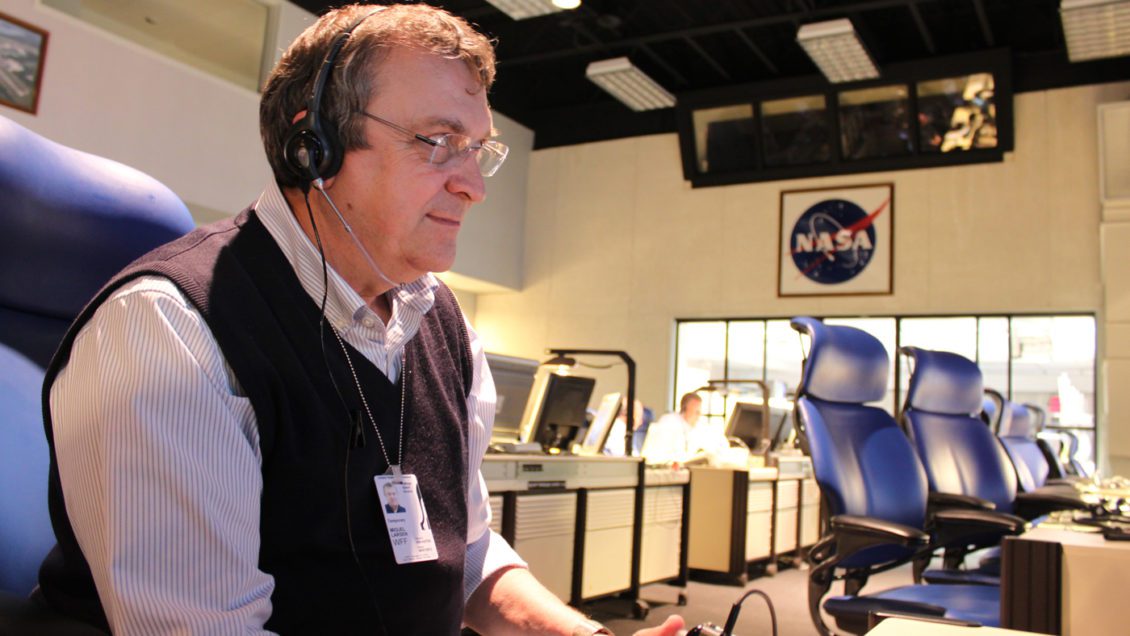CLEMSON, South Carolina — Clemson University College of Science professor emeritus Miguel Larsen, who has fundamentally changed the scientific community’s understanding of the Earth’s upper atmosphere, received NASA’s Distinguished Public Service Medal on Aug. 28 at the Goddard Space Flight Center in Maryland.
The medal is the highest honor the space agency bestows to non-government personnel.
Larsen is being recognized for his “pioneering research to measure vertical profiles of the Earth’s upper atmospheric winds and leading over 100 NASA sounding rockets during 40 years of research.”
“This award means a lot, particularly because it’s from NASA,” said Larsen, who joined the department of physics and astronomy in 1984. “You like to do work that people recognize and feel is important. It’s nice to have an impact.”
Larsen has dedicated his career to measuring and interpreting upper atmospheric winds in the ionosphere, a dynamic region about 60 miles from the Earth’s surface. Perhaps his biggest discovery was that wind speeds in this region are significantly stronger than what conventional scientific models expected.

His findings have helped scientists devise better models of the electromagnetic regions of space, which can damage satellites and disrupt radio communications. They have also helped explain how ash and particles from volcanic eruptions are transported around the world so rapidly.
“What became apparent is there are very large winds in this region and they produce a very rapid global transport,” Larsen said.
In the process of making these measurements, Larsen has become one of the world’s leading authorities on using sounding rockets and luminescent vapor trails to record the winds. He also developed triangulation techniques to accurately determine wind profiles and their evolution over time.
The rockets, which fly for about 10 minutes, release into the upper atmosphere tiny amounts of illuminating agents similar to the elements used in standard fireworks displays. These vapor tracers produce a colorful three-dimensional grid in the night sky. Teams of researchers at three locations on the ground then capture high-resolution video and still images of the bright display. From there, researchers are able to calculate the wind speed.
Larsen has also demonstrated that intense shears from large amplitude winds were causing mysterious quasi-periodic radar echoes observed in the lower ionosphere at night, a phenomenon that had puzzled researchers for decades.
“Dr. Larsen has had a distinguished career studying the uppermost portion of our atmosphere,” said Sean Brittain, department chair and professor of physics and astronomy in the College of Science at Clemson. “His sustained excellence is something his colleagues strive to emulate. This award is well-deserved recognition of this work.”
During his prolific career, Larsen has designed and built experiments that were flown on 100 NASA sounding rockets launched at high, mid- and low latitudes. Research colleagues from around the world regularly seek his counsel and expertise.
He is currently the lead investigator on the Cusp-Heating Investigation mission, which will launch later this year off the coast of northern Norway.
NASA’s Distinguished Public Service Medal
The NASA Distinguished Public Service Medal is the highest honor that NASA confers to a non-government partner who, by distinguished service, ability or vision, has personally contributed to NASA’s advancement of United States’ interests. Among the scientific luminaries who have won this award are:
- Astronomer, Pulitzer Prize-winner and NASA collaborator Carl Sagan;
- Inertial guidance system pioneer and Apollo mission contributor Charles Stark Draper;
- Maser inventor and Nobel laureate Charles Townes; and
- Solid-state physics pioneer Frederick Seitz.
Get in touch and we will connect you with the author or another expert.
Or email us at news@clemson.edu

